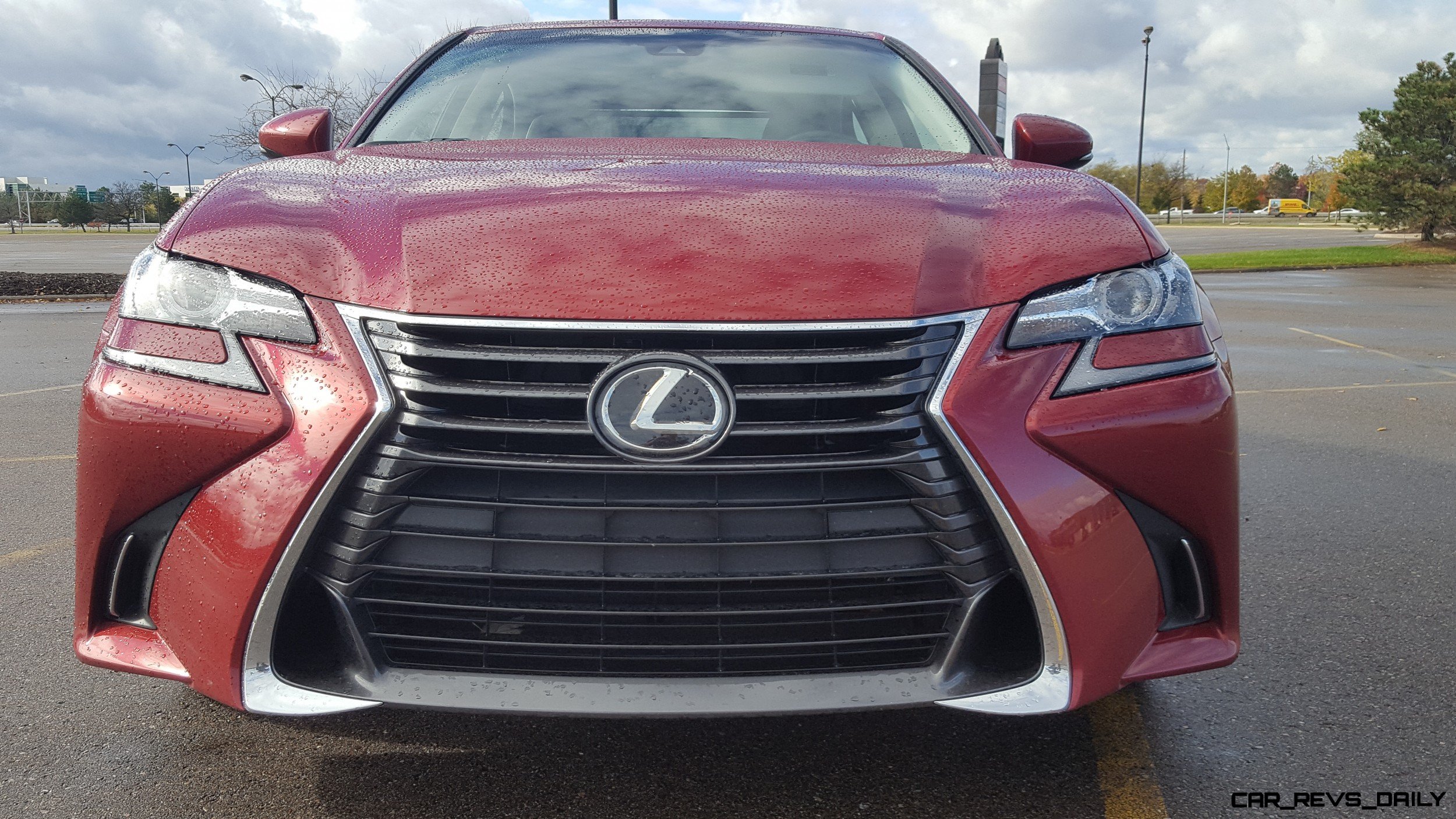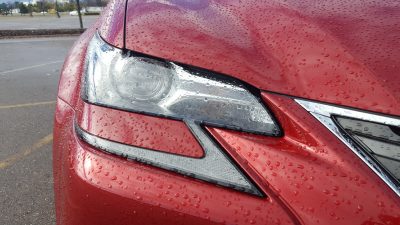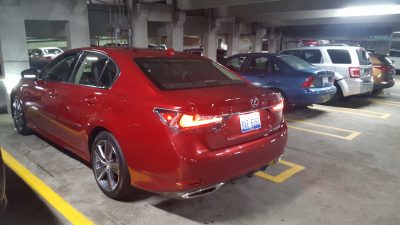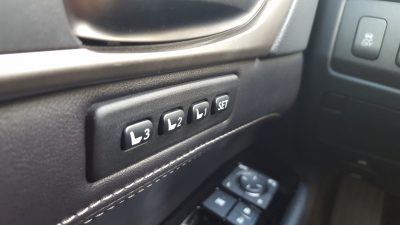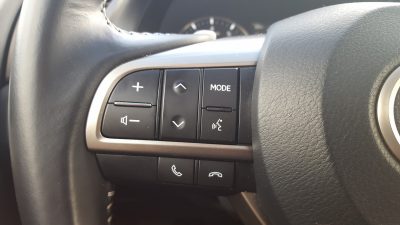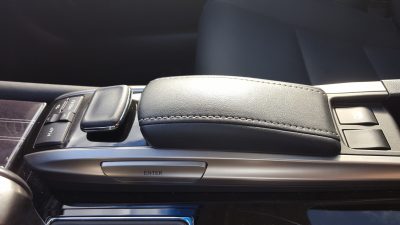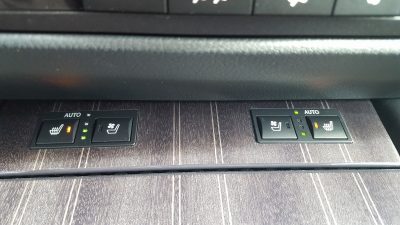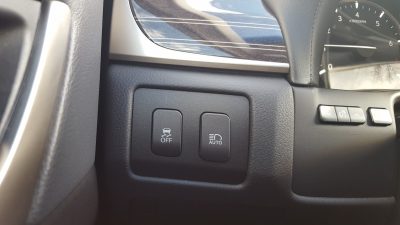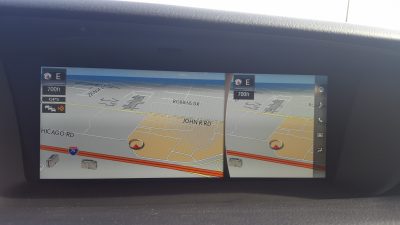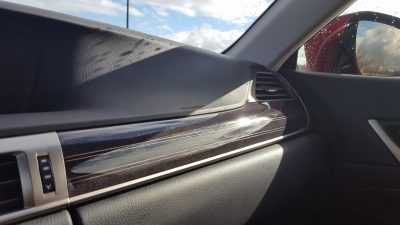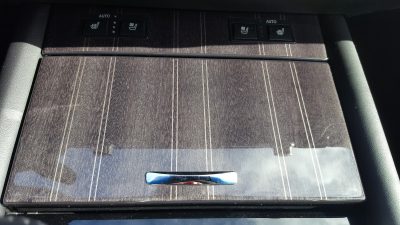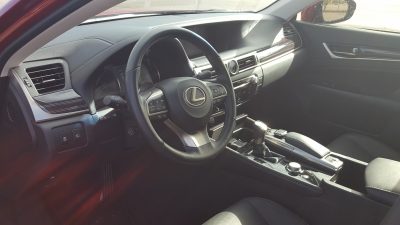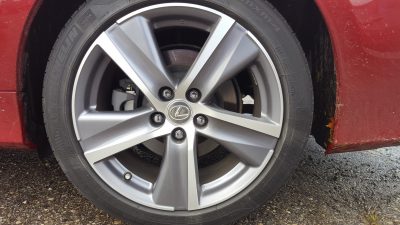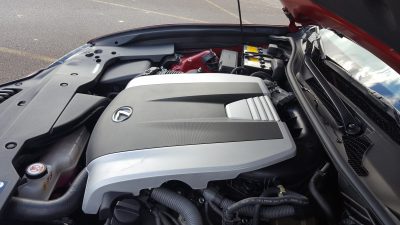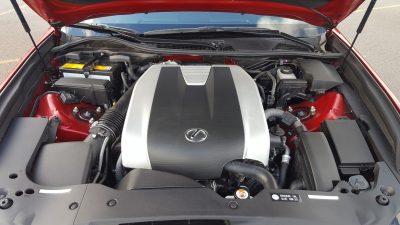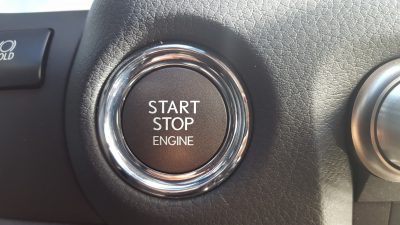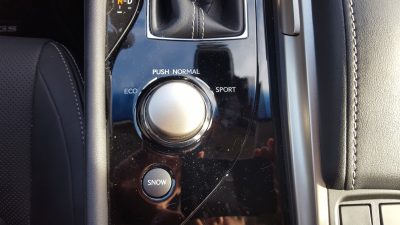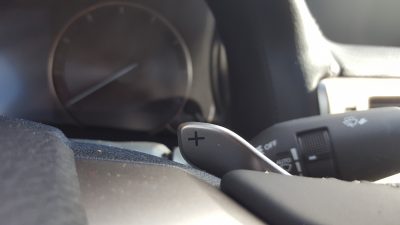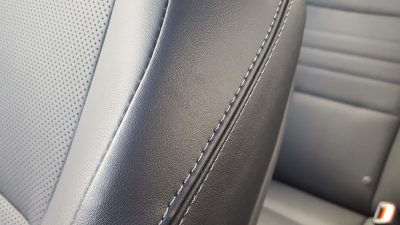The mid-size luxury sedan market is undergoing subtle but key changes in a bid to allow it to stay truly distinct from the onslaught of CUV and SUV entries that are draining sales away like an old school medical leech draining blood from a hospital patient. While the BMW 5-Series, Audi A6, and the Mercedes E-Class still remain the bench marking trilogy at the top of the segment, other automakers have not given up trying their best to topple these established icons. One of these marques is Lexus, with their GS series sedan. The GS was crafted towards style, and tries to offer some of the character that is missing from many German entries. But can the aging GS still be a viable value focused alternative to the mainstream benchmarks? Or is it the entry on the outside looking in.
Sharp but Aging Styling:
The exterior styling of our GS 350 all-wheel drive tester still managed to make a visual splash when viewed by passers-by. Yes, the look is beginning to show its age, but there’s no denying that the GS still looks handsome and sharp when viewed from certain angles. The front fascia houses the spindle grille that has become a defining characteristic of all current Lexus models. While the grille is typically a hit or miss item that depends on which Lexus offering it is fitted to, here on the GS, it manages to look handsome, and works nicely with the elegant looking headlights. However, the rest of the exterior styling is starting to become long in the tooth. The side profile is purposeful, but it also does not stand out in any distinct way, while the rear fascia is even blander, with the sharp creases scattered about not helping matters. We will also dock points for the GS 350 being one of the few Japanese offerings left that still offers clear style taillights. This treatment was at its height in the 1990’s and the early 2000’s, thanks in part to movies such as The Fast & The Furious, but here in 2018, they look out of step with current styling trends, and we prefer the more traditional but still handsome looking units that defined older iterations of the current generation GS. On the other hand, we did like the vibrant Matador Red Mica paint on our tester, and it helped add some much needed visual pop to a canvas that otherwise gets lost in the shuffle when viewed against the designs wielded by the BMW 5-Series, Alfa Romeo Giulia, and even the Mercedes E-Class.
A Stagnant Interior in a Progressive World:
The interior of our tester checked off all the usual boxes that many luxury cars are expected to live up to, with supple leather seats, high quality materials, and the usual splashes of sound deadening materials. The problem here lies in its overall design, age, and execution, with the GS 350 really showing its age in this category. While it is a step up over the interior wielded by the Jaguar XF we recently tested, the GS’s key German rivals have updated their cabins to be more tech savvy and aesthetically pleasing, and the GS appears to be a stagnant stalwart, especially when you nestle yourself behind the wheel. The design is functional, and it is a very cordial place to spend time in, but the cabin does not stand out in any distinct way. Our tester had a very attractive wood treatment, and we liked the way many of the buttons on the center stack were ergonomically placed.
However, being stagnant in a progressive world also means embracing older technology, and the GS 350 still wields Lexus’s old mouse based controller for its infotainment system. Even after using this system off and on for several years now, we still have a tough time with some of the finer aspects of its operation. Like before, the mouse is too sensitive, and there were instances where we overshot the menu we intended to open, and instead had the cursor wind up hovering over an unwanted icon. This results in time consuming micro adjustments, and unwanted distraction from operating it. While Lexus has tried to correct this by releasing a touchpad based layout in newer products, we wish that Lexus will one day adopt a traditional touchscreen interface that ditches these finnicky controls for a pure haptic screen.
Moving back to the brighter aspects of the cabin, we were delighted with the copious amounts of front legroom that allows occupants to stretch out and relax on long road trips, as well as the good amounts of visibility that the car offers all around. The rear seat is even reasonably accommodating, though in traditional mid-size luxury sedan fashion, rear headroom can be a bit tight for taller occupants. Trunk space is also quite good, with our tester easily swallowing some light luggage that me and Emily brought along for our trip to Youmacon in Detroit. We look forward to seeing if some of the ES’s design swagger will waft down to the GS in the future. The cabin can benefit from it, and this will allow the GS to catch up to German contenders in this regard.
A Nice Chassis but Where’s The Fun?
Driving our tester up and down the various roads that dotted our commute highlighted the split personality that exists in the GS’s underpinnings. When it is allowed to kick up its proverbial feet and relax, the GS becomes a very good road trip car, with the car gliding seamlessly over many bumps and imperfections. Wind noise was also banished, with only copious amounts of tire and road noise being noticed during our time with the GS. Yet when tasked with a challenging road, the GS retained a surprising degree of poise, with very little body roll intruding into the driving experience. The chassis was designed to match the characteristics that defined its German competitors, and on this front, the Lexus does come very close to meeting these benchmarks.
So where does it start to go awry? The answer lies in its performance hardware. A new 2.0 liter turbocharged four cylinder was added for 2016 that allowed the GS to gain a new base model, and also up its fuel economy game somewhat. Our tester arrived with the optional 3.5 liter V6 that makes a healthy 311 horsepower, but it too is aging, and it shows with its weak power delivery as well as the V6’s equally meager fuel economy numbers. The V6 is a smooth operator, but there are other engines in the segment that are more powerful, and also boast quicker 0 to 60 times with our tester completing the sprint in 6.6 seconds. The GS offers rear-wheel drive as standard for both the four cylinder and the V6, but buyers in snowier regions looking for all-wheel drive are limited to the V6 exclusively.
The eight speed automatic in our tester was equally smooth, but we did notice that shifts were somewhat slow in manual mode, and that prompted us to leave the computer to do the shift work for the duration of its stay with us. Things do sharpen up slightly in Sport mode which helps add some much needed vigor to shifts, but buyers looking for more responsiveness and enthusiast friendly gearing are best served in either the GS F-Sport or the range topping V8 powered GS F. Meanwhile, the GS 350 faces stiff competition in its own right, with not only Audi, Mercedes and BMW offering a stronger suite of engines, but the Alfa Romeo Giulia also dusting the spirited Lexus in handling manners.
Value Quotient:
Pricing for the 2018 Lexus GS lineup is arguably its strongest attribute when viewed against its European rivals. 2019 models are just beginning to make there way into Lexus showrooms, but the increase in price is very minimal. with base four cylinder equipped GS 300 models starting at $46,610. This is considerably less than many rival four cylinder models, and the GS 300 still retains a value edge even when moderately equipped.
Step up to V6 equipped models like our test car, and buyers will be required to pay a base price of $50,995. Curiously the addition of all-wheel drive actually brings the price down slightly to $50,665, a rare trend in a segment where the addition of such a system usually causes pricing for a car to go the opposite direction. Our lightly optioned 2018 all-wheel drive tester had a base price of $50,365 with options and fees helping to push the total to a final price of $54,394. The bulk of the price is centered on the optional $1,760 Premium Package that adds rain sensing wipers, heated and cooled front seats, as well as a power rear sunshade to the GS 350’s bag of tricks. Other items included the $650 leather wrapped steering wheel, $199 body color side moldings, and $425 illuminated door sills. Like before, the GS 350 emerges as a value focused alternative to the BMW 5-Series, Audi A6, and the Mercedes E-Class. All three of these models are pricier than the Lexus, and models comparable to our tester cost close to $60,000 which might put them out of reach for luxury buyers that want to retain more of their budget for other aspects of luxury car ownership.
The Lexus GS in all of its forms is an intriguing entry in the mid-size luxury sedan segment. It is still an entry that proudly flaunts its value oriented mission as well as its unique interpretation of luxury. But with the competition adding more and more updates to their respective entries, the GS 350 is starting to show its age. Hopefully Lexus will eventually bring a more comprehensive suite of updates to allow the GS range to regain some of the ground it has lost even if there are rumors swirling that the GS lineup is not long for this world.

Carl Malek has been an automotive journalist for over 10 years. First starting out as a freelance photographer before making the transition to writing during college, his work has appeared on numerous automotive forums as well as websites such as Autoshopper.com.
Carl is also a big fan of British vehicles with the bulk of his devotion going to the Morgan Motor Company as well as offerings from Lotus, MG, and Caterham. When he is not writing about automobiles, Carl enjoys spending time with his family and friends in the Metro Detroit area, as well as spending time with his adorable pets.

